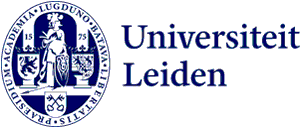
What do we define as urban green space?
When do we define a piece of nature in the city as a park? And when is something a tree or shrub? It may seem obvious, but in scientific literature the definitions vary quite a bit. That makes comparisons difficult. Environmental scientist Joeri Morpurgo looked at the differences and designed a general classification system for urban green space.
Urban greenery is a popular topic in scientific research on ecosystems and biodiversity. ‘When a researcher is looking at reducing heat in the city, parks play a big factor,’ Morpurgo says. 'When someone else is looking at urban water regulation, residents' well-being or urban biodiversity, parks are also often a crucial component.’ And what seems? The definition of a park varies quite a bit. ‘We have a general idea about urban green space: we think it is positive. But if we keep changing the definition to suit our own research, we have no benchmark at all to measure and compare impacts.’
When is something a tree?
Morpurgo analysed 143 scientific articles on topics such as climate, human health and biodiversity. In these, he looked at what researchers defined as urban green space in their publications. ‘The biggest difference I found is the term tree. As a biologist, the definition is pretty clear to me: if it is a tree species, then it is a tree. But that's not what we saw in the research.’
Some researchers used the definition that all vegetation above two metres is a tree. Others then used very different measurements, Morpurgo said. 'But a twenty-metre tree obviously has a very different effect on the environment than a two-metre shrub. Policymakers often say, “Research shows that trees are good for the city or for well-being.” But then we don't even know what exactly they are talking about. That's actually quite crazy.’ And the same is visible with other terms. ‘I found 27 different descriptions within the theme of afforestation for example.’

A new tool for vegetation
To avoid confusion in the future, Morpurgo created a classification system based on existing literature. ‘That classification first provides general definitions: what do we mean by agriculture, a park, wetland or a green roof, for example. Then we added a deeper layer to that.’ With questions about cover, height, stratification, and in the case of forests, the dominant tree species. A specific designation then comes out. ‘With these definitions, we can be sure that we are talking about the same thing in the future.’
The next step is to use that classification to create a new tool. ‘The idea is that you can type in a location and get a map with information. That will show what vegetation there is, what altitude it has and under what category it is classified.’ With a few clicks, you immediately have all the information. ‘So not only whether it is a forest, but also what kind of plants it contains and how much. For example, forest A may be completely covered with hardy trees, and forest B may have a patch of grassland or riparian plants here and there.’
An untouched goldmine of data
To create the tool, Morpurgo combines existing data. ‘In the Netherlands, for example, we have the Actueel Hoogtebestand Nederland (AHN). This digital map shows the height of vegetation everywhere in the Netherlands. Worldwide there is the satellite Sentinel-2 available for estimating how “green” an area is. We then combine that together with data on land use and land cover.’
The ambition is to be able to deploy the tool globally. ‘The data may not be as detailed everywhere as in the Netherlands, but we can still extract an awful lot of information from satellite images and Google Streetview, for example. That is a goldmine of data we are not yet tapping into properly.’
Companies can give better advice
The tool and classification system are interesting for both researchers and companies. ‘There is a general demand for standards and definitions that we can use. Not only in the Netherlands, but on a global scale. This way, at least we are clearly talking to each other about the same thing. The system is based on what we already use in the literature. Therefore, I assume that the terms are easy to work with.’
With these definitions, we can be sure that we are talking about the same thing.
Several companies have already shown interest in Morpurgo's classification. ‘This will allow a company to make much better computational maps on urban green space, for example. Or companies advising on urban design involving issues of biodiversity and well-being, can do so in a much more targeted way.’ Morpurgo hopes scientists and companies will use the classification as a standard in the future. ‘It feels good to be able to offer an alternative to the “everyone-just-does-something” system. These insights will bring are very valuable for global urban planning.’
Scientific publication
The Consolidated Urban Green Infrastructure Classification for assessing ecosystem services and biodiversity - Joeri Morpurgo, Roy P. Remme, Peter M. Van Bodegom
